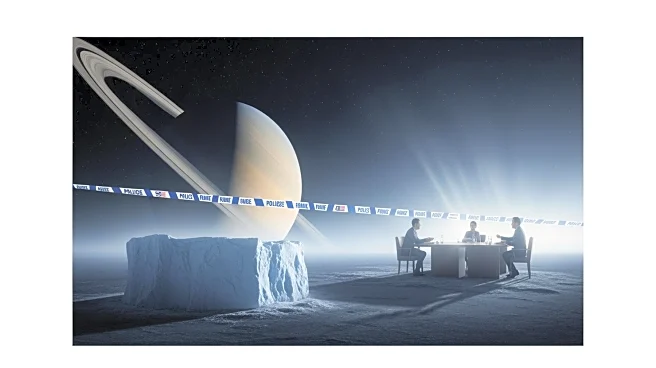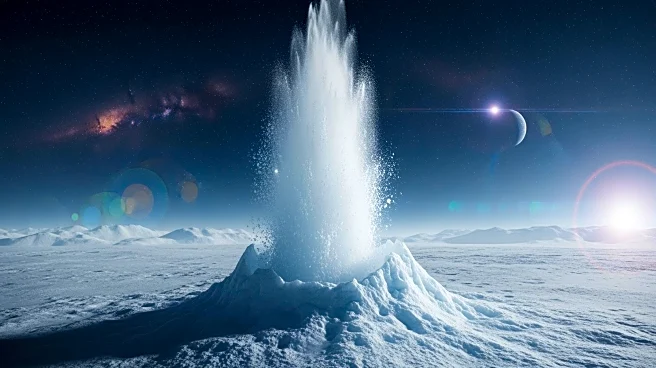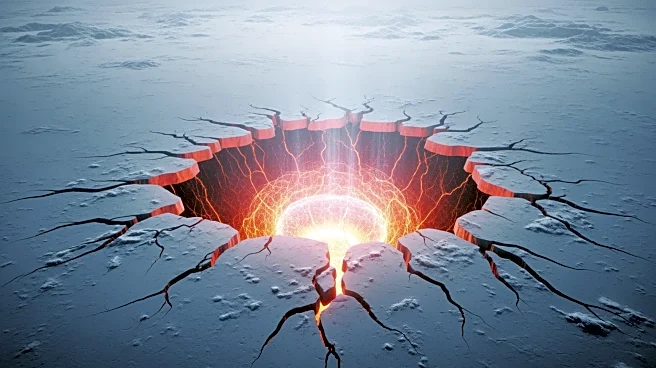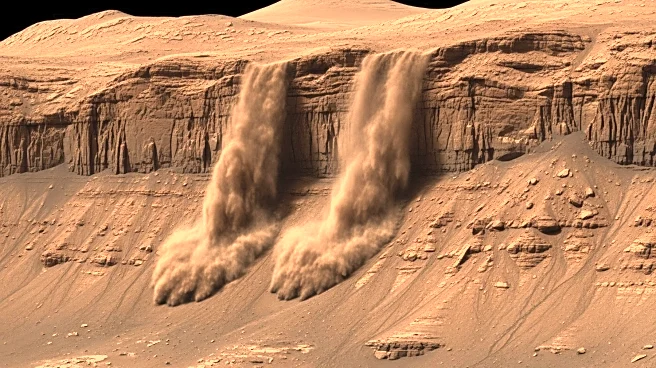What's Happening?
Recent studies have revealed excess heat emissions from the north pole of Saturn's moon Enceladus, suggesting a stable subsurface ocean that may have existed for geologically significant timescales. This
discovery enhances Enceladus' potential as a habitat for life, as the moon possesses water, heat, and organic chemistry conducive to life. The heat emissions are balanced by tidal interactions with Saturn, which keep the moon's interior warm enough for liquid water.
Why It's Important?
The findings bolster Enceladus' status as a prime target in the search for extraterrestrial life. Understanding the moon's energy balance is crucial for assessing its habitability and potential to support life. The study provides insights into the long-term sustainability of Enceladus' ocean, which is essential for life development. This research could guide future missions aimed at exploring the moon's subsurface ocean and assessing its potential for life.
What's Next?
Future missions may focus on drilling into Enceladus' ocean via the tiger stripes at the south pole, despite the challenges posed by the thick ice shell. The European Space Agency is considering a mission to launch in the 2040s to further explore Enceladus. Continued research and exploration could provide more definitive answers about the moon's habitability and the presence of life.











